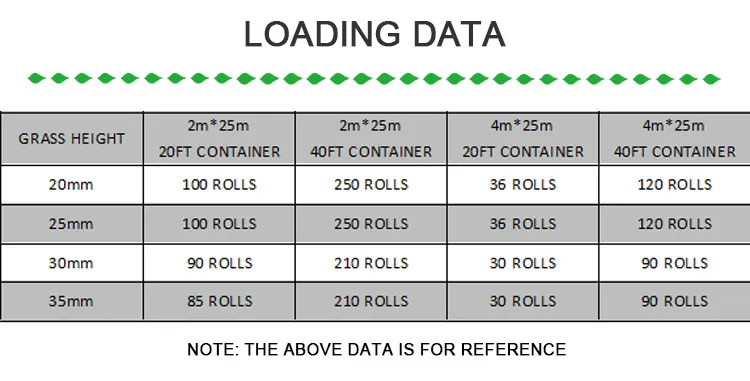
- Afrikaans
- Arabic
- Belarusian
- Bengali
- Czech
- Danish
- Dutch
- English
- Esperanto
- Estonian
- Finnish
- French
- German
- Greek
- Hindi
- Hungarian
- Icelandic
- Indonesian
- irish
- Italian
- Japanese
- kazakh
- Rwandese
- Korean
- Kyrgyz
- Lao
- Latin
- Latvian
- Malay
- Mongolian
- Myanmar
- Norwegian
- Persian
- Polish
- Portuguese
- Romanian
- Russian
- Serbian
- Spanish
- Swedish
- Tagalog
- Tajik
- Thai
- Turkish
- Turkmen
- Ukrainian
- Urdu
- Uighur
- Uzbek
- Vietnamese
Benefits of Artificial Grass for Football Fields and Its Impact on Play
Dec . 14, 2024 13:00 Back to list
The Rise of Artificial Grass in Football Grounds
In recent years, the use of artificial grass in football grounds has gained significant popularity, transforming the way the sport is played and experienced worldwide. Artificial grass, often referred to as synthetic turf, offers numerous advantages over traditional natural grass, leading to its widespread adoption in both professional and amateur levels of the game.
Advantages of Artificial Grass
One of the primary benefits of artificial grass is its durability. Unlike natural grass, which can suffer from wear and tear due to heavy foot traffic, weather conditions, and seasonal changes, synthetic turf is designed to withstand intense usage. This durability means that football matches can be played year-round without the concern of muddy or worn-out pitches, significantly increasing the amount of playtime available. Facilities no longer need to close for maintenance or rest while natural grass recovers, allowing for more scheduled games and practices.
Moreover, artificial grass typically requires less maintenance than natural grass. Keeping a natural pitch in top condition necessitates extensive watering, mowing, fertilizing, and pest control. In contrast, synthetic turf requires minimal upkeep—periodic brushing to maintain its appearance and occasional cleaning to remove debris. This reduced maintenance demand allows clubs and facilities to allocate resources more effectively, directing funds and efforts toward player development and community engagement instead.
Another substantial advantage is the consistent playing surface that artificial grass provides. Natural grass can vary in texture and hardness, which can impact player performance and safety. On the other hand, synthetic turf is engineered to offer a uniform playing experience, allowing athletes to focus on their game without being concerned about potential injuries due to uneven surfaces. This consistency not only enhances the overall experience for players but also appeals to coaches and trainers who prioritize safe practice environments.
Environmental Considerations
artificial grass football ground

While the advantages of artificial grass are commendable, it is important to address environmental concerns associated with its use. Traditional natural grass fields are often praised for their ability to absorb carbon dioxide and release oxygen, contributing positively to the ecosystem. The production and disposal of artificial turf, particularly the underlying infill materials such as crumb rubber, have raised questions about their environmental impact, including potential toxic substances leaching into the soil and water.
In response to these concerns, advancements in artificial grass technology have sought to minimize environmental footprints. Manufacturers are increasingly developing eco-friendly options, utilizing recycled materials and implementing proper disposal systems to mitigate ecological damage. Furthermore, some innovative designs offer better drainage systems, reducing the necessity for extensive irrigation, which can save precious water resources.
The Future of Artificial Grass in Football
The integration of artificial grass into football grounds has shown no signs of slowing down. Major football organizations and clubs, recognizing the benefits of synthetic turf, continue to invest in its development. For instance, FIFA has set up a certification system to ensure that these surfaces meet high-quality standards. This initiative not only encourages safe and enjoyable play but also fosters wider acceptance of artificial pitches across varying levels of competition.
Additionally, the rise of artificial grass has expanded accessibility to football. Communities that previously struggled to maintain natural pitches due to climate or economic limitations can now foster football development programs using artificial turf. This democratization of resources enables more children and adults to engage in the sport, promoting inclusivity and physical activity.
In conclusion, artificial grass has revolutionized football grounds, presenting a multitude of benefits for players, clubs, and communities alike. While considerations regarding environmental impact remain valid, ongoing innovations aim to reconcile these challenges. As the sport evolves, the role of artificial grass is likely to become even more integral to the future of football, ensuring that the beautiful game remains accessible and enjoyable for all.
-
The Benefits of Artificial Turf for Indoors
NewsJul.15,2025
-
How Artificial Grass Suppliers Ensure Quality Products
NewsJul.15,2025
-
Artificial Grass and Pets: A Space for Relaxation
NewsJul.08,2025
-
Balcony & Outdoor Decoration with Artificial Grass
NewsJul.08,2025
-
Best Indoor Artificial Grass for Home
NewsJul.07,2025
-
Best Pet Turf for Dogs: Safe & Durable Artificial Grass Options
NewsJul.07,2025
Products categories









